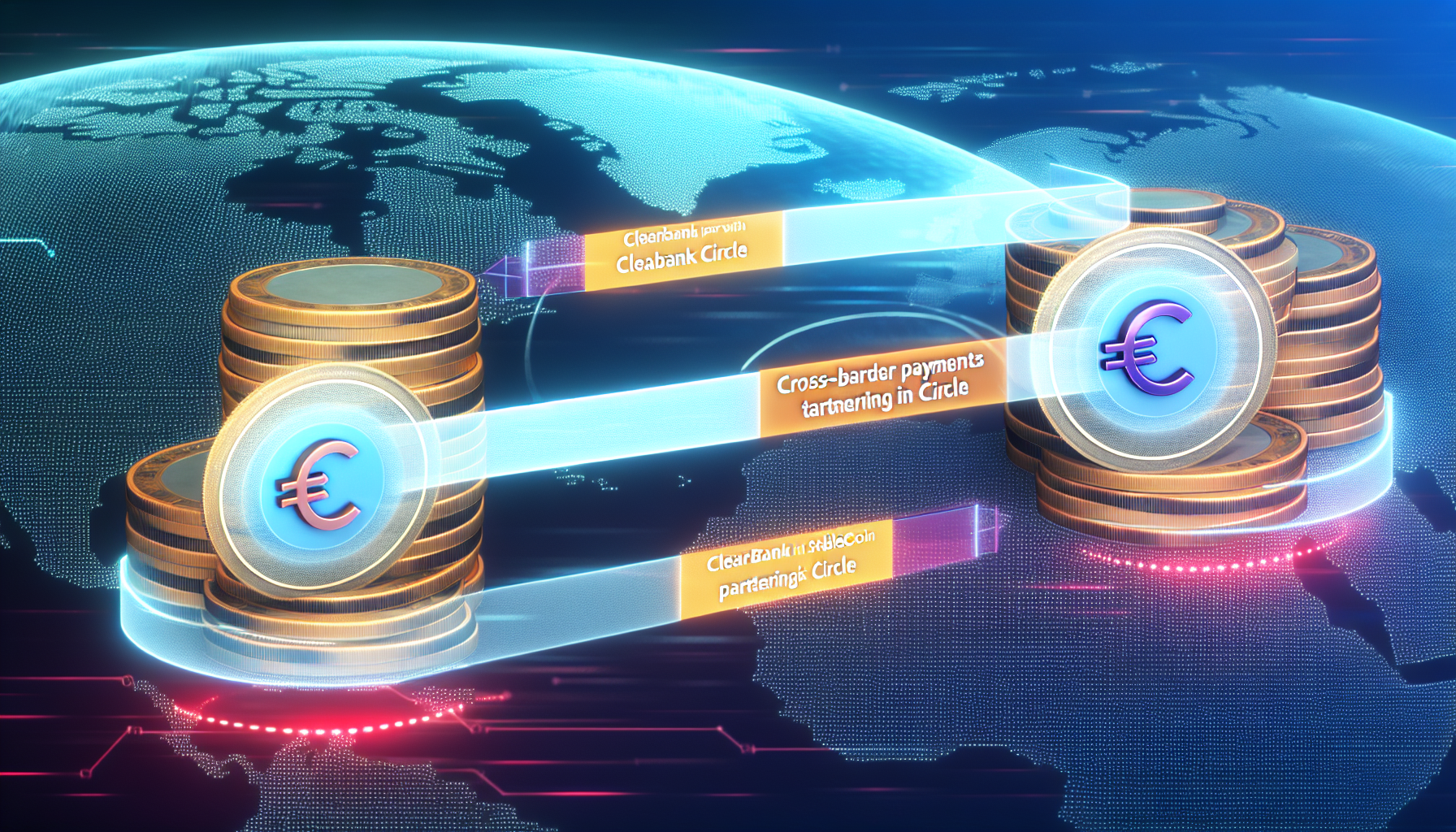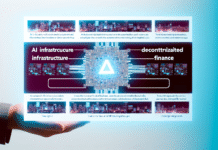The financial services industry is witnessing a transformative moment as ClearBank announces its plan to become one of the first European banks to join the Circle Payments Network (CPN). This strategic move is set to redefine how cross-border payments are conducted within Europe by leveraging the efficiency and innovation of stablecoins, namely USDC and EURC. By integrating Circle’s on-demand minting and redemption engine, Circle Mint, ClearBank aims to significantly enhance settlement speed, reduce costs, and improve liquidity management for its clients. This development marks a pivotal step in the mainstream adoption of tokenized fiat currencies and signals the increasing convergence of traditional banking with blockchain technology.
ClearBank and the Circle Payments Network: A New Era in Cross-Border Payments
ClearBank, a UK-based cloud-native digital bank known for its progressive stance on crypto and digital finance, is embarking on a notable partnership with Circle Internet Group, the issuer of globally recognized USDC and European EURC stablecoins. Through this collaboration, ClearBank will join the Circle Payments Network, a blockchain-based infrastructure designed to modernize and streamline cross-border payments.
The Circle Payments Network enables financial institutions to securely exchange payment instructions and settle transactions in near-real time on public blockchains, moving away from the slow, manual, and fragmented legacy systems traditionally used in international transfers. By bringing regulated banking infrastructure together with blockchain-native technology, ClearBank will be able to offer its customers more efficient, transparent, and cost-effective settlement solutions.
Leveraging Circle Mint for Scalable Stablecoin Management
At the heart of this integration is Circle Mint, Circle’s on-demand stablecoin minting and redemption platform. This technology automates the real-time creation and burning of stablecoins — USDC and EURC in this case — directly tied to fiat currency deposits and withdrawals. For ClearBank, this translates into:
- Enhanced liquidity management: Automated minting and burning facilitate precise control of stablecoin supply, reducing idle capital and lowering counterparty risk.
- Improved settlement efficiency: Real-time processing accelerates transaction finality, minimizing delays typical in cross-border payments.
- Scalability: Ability to scale stablecoin issuance quickly and on demand to meet payment and liquidity needs across multiple currencies.
This integration is expected to be a key enabler for ClearBank’s ambition to become a major infrastructure provider in Europe for banking and fintech clients seeking programmable, compliant multi-currency payment solutions.
Benefits for Customers and Financial Institutions
ClearBank’s adoption of Circle’s stablecoin infrastructure offers multiple benefits that align with current industry demands for faster, cheaper, and more transparent payment rails:
- Faster Cross-Border Settlements: Utilizing stablecoins like USDC and EURC on an interoperable network reduces settlement times from days to minutes or seconds, enhancing cash flow for businesses and consumers.
- Lower Transaction Costs: By bypassing legacy correspondent banking networks and their associated fees, ClearBank-powered payments on Circle Payments Network promise significant cost savings.
- Regulatory Compliance: Both ClearBank and Circle emphasize adherence to regulatory frameworks such as the EU’s Markets in Crypto Assets regulation (MiCA), ensuring that transactions maintain high standards of transparency and security.
- Programmability and Innovation: Stablecoins on blockchain allow for programmable money features, enabling new financial products, automated workflows, and enhanced treasury operations for institutional clients.
Such advancements are particularly timely given the increasing institutional interest in tokenized fiat currencies as a way to modernize traditional financial infrastructure and remain competitive in a rapidly evolving global payments landscape.
Contextualizing the Partnership within the Broader Industry
ClearBank’s move to join the Circle Payments Network comes at a time when many traditional financial players are exploring stablecoins to enhance payment services. This partnership echoes other major industry developments where banks, market infrastructure operators, and fintechs are collaborating to integrate digital assets responsibly into established finance.
For example, Deutsche Börse Group has entered a memorandum of understanding with Circle to advance the adoption of EURC and USDC stablecoins within European capital markets. Similarly, major global banks such as Standard Chartered, Deutsche Bank, and Société Générale have joined Circle Payments Network, highlighting the institutional momentum behind stablecoin infrastructure for cross-border payments.
Beyond Europe, payment giants like Western Union are piloting stablecoin settlement systems to improve efficiency and reduce reliance on traditional correspondent banking channels, pointing to a global shift. JPMorgan Chase’s recent announcement to allow Bitcoin and Ethereum as collateral for loans further demonstrates the evolving intersection between traditional banking and digital assets.
Overcoming Regulatory and Operational Challenges
Historically, regulatory scrutiny posed challenges for banks wishing to engage deeply with stablecoins and crypto-assets. ClearBank itself experienced delays related to Bank of England regulatory processes concerning stablecoin issuance. However, the implementation of regulatory frameworks like MiCA in Europe is creating a clearer, more supportive environment for banks to participate in this ecosystem.
ClearBank’s integration with Circle is designed to be fully MiCA-compliant, signaling confidence in the regulatory landscape and the institution’s readiness to operate within it. This highlights a maturing infrastructure that balances innovation with necessary regulatory safeguards, thus encouraging wider adoption.
The Future of Tokenized Money in European Finance
The partnership between ClearBank and Circle is not just about accelerating payments; it represents a broader shift toward a digital-first financial system powered by tokenized fiat currencies. By embedding stablecoins into mainstream banking channels, financial institutions can offer:
- Greater inclusion: Easier access to fast and affordable payment rails for SMEs, fintechs, and underbanked populations.
- New financial products: Innovations in programmable money that could revolutionize treasury, trade finance, and asset management.
- Global reach: Cross-border payment solutions that transcend legacy infrastructures and provide seamless international transfer capabilities.
As ClearBank advances its integration, it sets a precedent for other European banks and financial services firms to follow, signaling that stablecoins and blockchain-based settlement networks are ready for mainstream adoption.
Conclusion
ClearBank’s decision to join the Circle Payments Network marks a milestone in the evolution of European banking and payments infrastructure. By integrating Circle’s technology, ClearBank is harnessing the power of programmable, compliant stablecoins to offer faster, cheaper, and more efficient cross-border transactions within Europe. This move not only reflects the growing institutional demand for tokenized fiat currencies but also underscores the transformative potential of stablecoins in reshaping traditional finance. As regulatory clarity improves and more financial institutions embrace digital assets, collaborations like this will be instrumental in building the future of global payments.
















